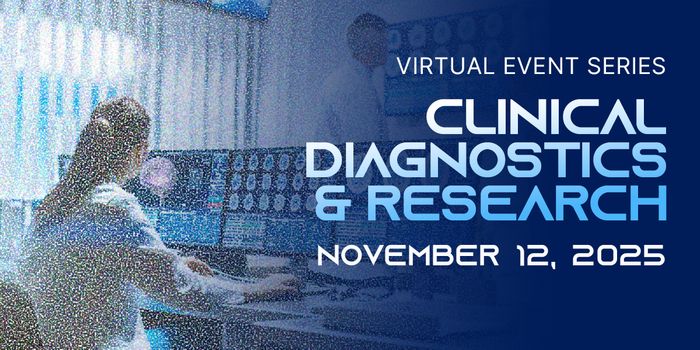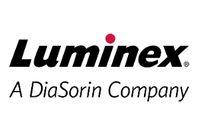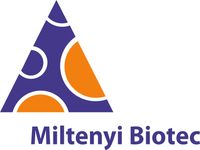Karen David currently oversees the Circuits and Integrated Approaches portfolio of the BRAIN initiative. She joined the Systems and Cognitive Neuroscience cluster in 2013. Over the years, she has served the BRAIN Initiative in various capacities, including as Project Officer ...
See more-
Karen David, PhD
-
James Gnadt, PhD
Dr. Jim Gnadt, NINDS Program Director in Systems and Computational Neuroscience and Team Lead for the NIH BRAIN Integrative and Quantitative Approaches, has worked in systems and cognitive neuroscience and neuroengineering for over 35 years. He has held his current position at ...
See more -
Yasmin Kloth, M.S.
Yasmin Kloth, M.S., is chief of communications and outreach at the National Institutes of Health's (NIH) BRAIN Initiative. In this role, she makes connections and fosters collaborations with the communications offices of BRAIN Initiative partners-inside and outside NIH. In ...
See more -
Ariel Louwrier
President & CEO of StressMarq Biosciences Inc., a research reagent company with primary product lines in neurodegenerative diseases and cellular stress based in Victoria (BC), Canada. Successful Senior Scientific Business Executive with demonstrated expertise growing markets ...
See more -
Paul Mathews
Dr. Paul J. Mathews received his bachelors degree from the University of Oregon where he studied invertebrate behavioral plasticity in the lab of Dr. Nathan Tublitz. He received his Ph.D. in neuroscience from the University of Texas at Austin under the mentorship of Dr. Nace ...
See more -
Dorit Saberi, PhD
Dorit Saberi, Ph.D is a Supervising Psychologist and Clinical Director of the Safe Harbor- Trauma Recovery Center at Harbor UCLA Medical Center. She is also an Associate Professor inthe Department of Psychiatry at the University of California Los Angeles (UCLA) - David Geffen ...
See more
Neuroscience Virtual Event Series 2022


Labroots is excited to present the 10th annual event in the Neuroscience Virtual Event Series. This distinguished, online-only, event is free to attend and will once again bring together the neuroscience community to discuss and present the newest advances in understanding the human brain, neuropsychiatric disorders, and behavioral processes as it relates to the brain function.
The tracks will include:
- NIH Brain Initiative: Human Neuroscience and the Cross-Cutting Impact of Scientific Collaboration
- Neuroethics
- Cognitive/Executive Function
- Technologies/Approaches/BCI
- Disease
- Advancements to Combat Neurodegenerative Disease
- Developments in Behavior and Psychiatric Disorder Research
Call for Posters — Virtual poster sessions offer the opportunity to present data to a global audience via a PDF poster and video summary and discuss results with interested colleagues through email. Plan now to have your poster included in the Neuroscience 2021 Virtual Event. Submission is free. Submit your abstract here.
Our virtual conference allows you to participate in a global setting with no travel or cost to you. The event will remain open for 2 years from the date of the live event, and the webinars will be available for unlimited on-demand viewing. This virtual conference also offers increased reach for the global microbiology community with a high degree of interaction through live-streaming video and chat sessions.
Continuing Education
Labroots is approved as a provider of continuing education programs in the clinical laboratory sciences by the ASCLS P.A.C.E. ® Program. By attending this event, you can earn 1 Continuing Education credit per presentation for a maximum of 40 credits.
Labroots is a proud partner of Chati, a virtual event platform that allows for the hosting of engaging and interactive virtual and hybrid events, catering to businesses of any vertical or size.
Use #LRneuro to follow the conversation!

Agenda Share
-
MAR 10, 2022 7:30 AM PST
Spatial Transcriptomic Profiling of Spiny Projection Neurons in the Mouse Striatum
Alison VanSchoiack, PhD
Senior Product Enablement Scientist, NanoString TechnologiesBIOGRAPHYSponsored By: NanoString Technologies -
MAR 10, 2022 9:00 AM PST
Keynote Presentation: Modulation of the CSPG Receptor PTPσ to Enhance Neurorepair
-
MAR 10, 2022 10:30 AM PST
Automated 3D Light Sheet Microscopy: Opening New Dimensions in Neuroscience
-
MAR 10, 2022 12:00 PM PST
Keynote Presentation: Getting Into the Brain: the Ethics of Invasive Human Neuroscience Research
Ashley Feinsinger, PhD
Adjunct Assistant professor, Department of Medicine, Affiliated faculty department of Philosophy, UCLABIOGRAPHY -
MAR 10, 2022 1:30 PM PST
Utilization of the Luminex Platform to Discover and Develop Dual Toll-like Receptor 2 and 9 Antagonists for the Treatment of Neurodegenerative Diseases
Diana L. Price, PhD
Executive Director, Biosciences, Neuropore Therapies, Inc.BIOGRAPHYSponsored By: Luminex - A DiaSorin Company -
Can Peripheral Infections Trigger Multiple System Atrophy?
Wouter Peelaerts, PhD
Neuroscientist and Senior Post-Doctoral Fellow, FWO Flanders at KU LeuvenBIOGRAPHY -
Context-Dependent Representation of Memory and Choice in the Human Brain
Juri Minxha, PhD
Postdoctoral Scholar, Department of Neurosurgery, Cedars Sinai Medical Center, Los AngelesBIOGRAPHY -
Electrophysiology-Guided Brain Stimulation
Corey Keller, MD, PhD
Assistant Professor, Psychiatry and Behavioral Sciences, Stanford University Medical CenterBIOGRAPHY -
Higher Resolution Electrodes Improve Our Understanding Human Brain, Cognition, and Neurological Pathologies
Angelique C. Paulk, PhD
Instructor, Department of Neurology, Massachusetts General Hospital (MGH)BIOGRAPHY -
How the Human Brain Detects Cognitive Boundaries to Structure Memory
Jie Zheng, PhD
Assistant Professor, Neurological Surgery and Biomedical Engineering, University of California, DavisBIOGRAPHY -
Identification of Candidate Neural Biomarkers of OCD Symptom Intensity in Ecologically Valid Environments
Nicole Provenza, PhD
Postdoctoral Fellow, Dr. Sameer Sheth's Laboratory, Baylor College of MedicineBIOGRAPHY -
Meaning in the Brain: Combination, Concreteness, Coherence
Elliot Murphy
Department of Neurosurgery, McGovern Medical School, University of Texas Health Science Center (UTHealth), Texas Institute for Restorative Neurotechnologies (TIRN)BIOGRAPHY -
Personalized Brain Stimulation in Psychiatry
Katherine Scangos, MD, PhD
Assistant Professor, Department of Psychiatry, University of California, San FranciscoBIOGRAPHY -
Seeking Vitality: Understanding and Addressing Increased Rates of Depression During the COVID-19 Pandemic
Neha Agrawal, Psy.D.
Clinical Psychologist II, Safe Harbor Trauma Recovery Center, Harbor UCLA Medical CenterBIOGRAPHY -
Stereo-EEG-Guided Deep Brain Stimulation for Treatment-Resistant Depression - Circuit Mapping and Modulation
Kelly Bijanki, PhD
Assistant Professor, Department of Neurosurgery, Baylor College of MedicineBIOGRAPHY -
The Spatial Reach of Brain Wave Synchronization
John Myers, PhD
Postdoctoral Associate, Department of Neurosurgery, Baylor College of MedicineBIOGRAPHY
- Advancements to Combat Neurodegenerative Disease
-
MAR 10, 2022 7:30 AM PST
Spatial Transcriptomic Profiling of Spiny Projection Neurons in the Mouse Striatum
Alison VanSchoiack, PhD
Senior Product Enablement Scientist, NanoString TechnologiesBIOGRAPHYSponsored By: NanoString Technologies -
MAR 10, 2022 9:00 AM PST
Keynote Presentation: Modulation of the CSPG Receptor PTPσ to Enhance Neurorepair
-
MAR 10, 2022 10:30 AM PST
Automated 3D Light Sheet Microscopy: Opening New Dimensions in Neuroscience
-
MAR 10, 2022 1:30 PM PST
Utilization of the Luminex Platform to Discover and Develop Dual Toll-like Receptor 2 and 9 Antagonists for the Treatment of Neurodegenerative Diseases
Diana L. Price, PhD
Executive Director, Biosciences, Neuropore Therapies, Inc.BIOGRAPHYSponsored By: Luminex - A DiaSorin Company -
Can Peripheral Infections Trigger Multiple System Atrophy?
Wouter Peelaerts, PhD
Neuroscientist and Senior Post-Doctoral Fellow, FWO Flanders at KU LeuvenBIOGRAPHY - NIH Brain Initiative: Human Neuroscience and the Cross-Cutting Impact of Scientific Collaboration
- Neuroethics
-
MAR 10, 2022 12:00 PM PST
Keynote Presentation: Getting Into the Brain: the Ethics of Invasive Human Neuroscience Research
Ashley Feinsinger, PhD
Adjunct Assistant professor, Department of Medicine, Affiliated faculty department of Philosophy, UCLABIOGRAPHY - Disease
-
Personalized Brain Stimulation in Psychiatry
Katherine Scangos, MD, PhD
Assistant Professor, Department of Psychiatry, University of California, San FranciscoBIOGRAPHY -
Stereo-EEG-Guided Deep Brain Stimulation for Treatment-Resistant Depression - Circuit Mapping and Modulation
Kelly Bijanki, PhD
Assistant Professor, Department of Neurosurgery, Baylor College of MedicineBIOGRAPHY -
The Spatial Reach of Brain Wave Synchronization
John Myers, PhD
Postdoctoral Associate, Department of Neurosurgery, Baylor College of MedicineBIOGRAPHY -
Electrophysiology-Guided Brain Stimulation
Corey Keller, MD, PhD
Assistant Professor, Psychiatry and Behavioral Sciences, Stanford University Medical CenterBIOGRAPHY -
Identification of Candidate Neural Biomarkers of OCD Symptom Intensity in Ecologically Valid Environments
Nicole Provenza, PhD
Postdoctoral Fellow, Dr. Sameer Sheth's Laboratory, Baylor College of MedicineBIOGRAPHY - Cognitive/Executive Function
-
Context-Dependent Representation of Memory and Choice in the Human Brain
Juri Minxha, PhD
Postdoctoral Scholar, Department of Neurosurgery, Cedars Sinai Medical Center, Los AngelesBIOGRAPHY -
Meaning in the Brain: Combination, Concreteness, Coherence
Elliot Murphy
Department of Neurosurgery, McGovern Medical School, University of Texas Health Science Center (UTHealth), Texas Institute for Restorative Neurotechnologies (TIRN)BIOGRAPHY -
How the Human Brain Detects Cognitive Boundaries to Structure Memory
Jie Zheng, PhD
Assistant Professor, Neurological Surgery and Biomedical Engineering, University of California, DavisBIOGRAPHY - Technologies/Approaches/BCI
-
Higher Resolution Electrodes Improve Our Understanding Human Brain, Cognition, and Neurological Pathologies
Angelique C. Paulk, PhD
Instructor, Department of Neurology, Massachusetts General Hospital (MGH)BIOGRAPHY - Developments in Behavior and Psychiatric Disorder Research
-
Seeking Vitality: Understanding and Addressing Increased Rates of Depression During the COVID-19 Pandemic
Neha Agrawal, Psy.D.
Clinical Psychologist II, Safe Harbor Trauma Recovery Center, Harbor UCLA Medical CenterBIOGRAPHY
Speakers Share
-
Neha Agrawal, Psy.D.
Clinical Psychologist II, Safe Harbor Trauma Recovery Center, Harbor UCLA Medical Center
BIOGRAPHY
-
Kelly Bijanki, PhD
Assistant Professor, Department of Neurosurgery, Baylor College of Medicine
BIOGRAPHY
-
Amanda Burke, PhD
Field Application Scientist, Miltenyi Biotec Inc.
BIOGRAPHY
-
Marc DePaul, PhD
Director of Research, NervGen Pharma
BIOGRAPHY
-
Ashley Feinsinger, PhD
Adjunct Assistant professor, Department of Medicine, Affiliated faculty department of Philosophy, UCLA
BIOGRAPHY
-
Corey Keller, MD, PhD
Assistant Professor, Psychiatry and Behavioral Sciences, Stanford University Medical Center
BIOGRAPHY
-
Jacob McPhail, PhD
R&D Scientist, StressMarq Biosciences Inc.
BIOGRAPHY
-
Juri Minxha, PhD
Postdoctoral Scholar, Department of Neurosurgery, Cedars Sinai Medical Center, Los Angeles
BIOGRAPHY
-
Elliot Murphy
Department of Neurosurgery, McGovern Medical School, University of Texas Health Science Center (UTHealth), Texas Institute for Restorative Neurotechnologies (TIRN)
BIOGRAPHY
-
John Myers, PhD
Postdoctoral Associate, Department of Neurosurgery, Baylor College of Medicine
BIOGRAPHY
-
Angelique C. Paulk, PhD
Instructor, Department of Neurology, Massachusetts General Hospital (MGH)
BIOGRAPHY
-
Wouter Peelaerts, PhD
Neuroscientist and Senior Post-Doctoral Fellow, FWO Flanders at KU Leuven
BIOGRAPHY
-
Diana L. Price, PhD
Executive Director, Biosciences, Neuropore Therapies, Inc.
BIOGRAPHY
-
Nicole Provenza, PhD
Postdoctoral Fellow, Dr. Sameer Sheth's Laboratory, Baylor College of Medicine
BIOGRAPHY
-
Katherine Scangos, MD, PhD
Assistant Professor, Department of Psychiatry, University of California, San Francisco
BIOGRAPHY
-
Alison VanSchoiack, PhD
Senior Product Enablement Scientist, NanoString Technologies
BIOGRAPHY
-
Oscar Woolnough, PhD
Postdoctoral Fellow, The University of Texas Health Science Center
BIOGRAPHY
-
Jie Zheng, PhD
Assistant Professor, Neurological Surgery and Biomedical Engineering, University of California, Davis
BIOGRAPHY
-
Sino Biological
Sino Biological, Inc. is a global leader in manufacturing affordable, high-quality reagents, including recombinant proteins, antibodies and cDNA clones-all in-house. We provide a one-stop shop for researchers and pharmaceutical companies around the world, helping our customers ...
See more -
NanoString Technologies
NanoString Technologies (NASDAQ: NSTG) is a publicly held provider of life science tools for translational research and molecular diagnostics. The company's technology enables a wide variety of basic research, translational medicine and in vitro diagnostics applications ...
See more -
Atlas Antibodies
Atlas Antibodies is a Swedish biotechnology company driving leading research worldwide through providing affinity-purified monoclonal and polyclonal antibodies, and control antigens. Our product portfolio extensively covers human proteins in cells, tissues, and organs. With our ...
See more -
Luminex - A DiaSorin Company
At Luminex, our mission is to empower labs to obtain reliable, timely, and actionable answers, ultimately advancing health. We offer a wide range of solutions applicable in diverse markets including clinical diagnostics, pharmaceutical drug discovery, biomedical research, genomic ...
See more -
Miltenyi Biotec
For over 30 years, Miltenyi Biotec has been a leader in the development of products that empower the advancement of biomedical research and enable cell and gene therapy. We provide innovative tools to help with your sample preparation, cell isolation, cell culture, and cell ...
See more -
OriGene
OriGene Technologies was founded as a research tool company focused on the creation of the large commercial collection of full-length human cDNAs in a standard expression vector. The availability of the complete human genome sequence and the subsequent development of genome-based ...
See more
Event Series

Neuroscience Virtual Event Series 2026

Neuroscience Virtual Event Series 2025

Neuroscience Virtual Event Series 2024

Neuroscience Virtual Event Series 2023

Neuroscience Virtual Event Series 2021

Laboratory Animal Sciences Virtual Event Series 2021

Laboratory Animal Sciences Virtual Event Series 2020

Neuroscience Virtual Event Series 2020

Neuroscience Virtual Event Series 2019

Laboratory Animal Sciences Virtual Event Series 2019

Neuroscience Virtual Event Series 2018

Laboratory Animal Sciences Virtual Event Series 2018

Neuroscience Virtual Event Series 2017

Laboratory Animal Sciences Virtual Event Series 2017

Neuroscience Virtual Event Series 2016

Laboratory Animal Sciences Virtual Event Series 2016

Neuroscience Virtual Event Series 2015

Laboratory Animal Sciences Virtual Event Series 2015

Neuroscience Virtual Event Series 2014









































































